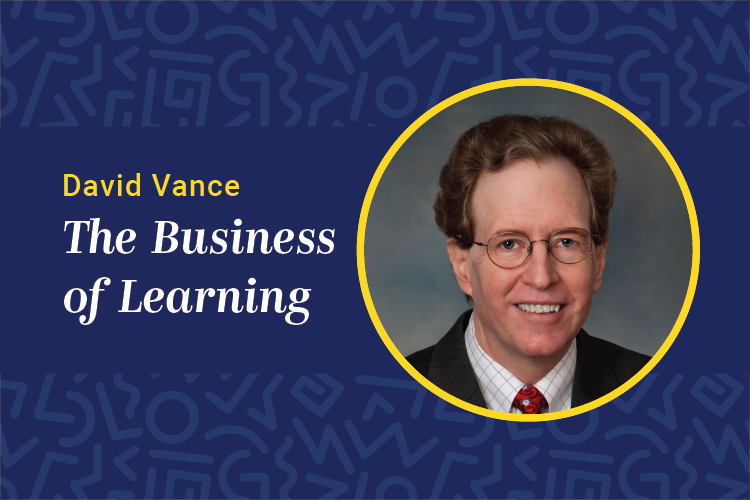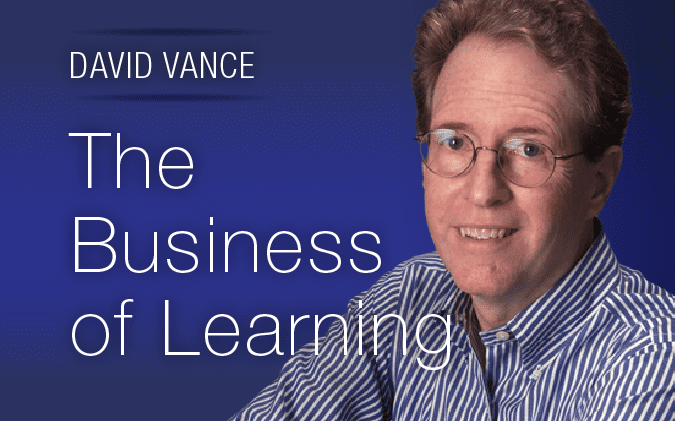 An important part of running learning like a business is making specific, measurable plans at the start of the year, then making forecasts of how the year is likely to end as it progresses. The plan or forecast may be for an outcome measure like learning’s impact on a business goal: for example, 3 percent higher sales or a two-point increase in employee engagement due to learning for an effectiveness measure, like a 5 percent higher application rate. Or, for an efficiency measure like a 10 percent increase in the utilization rate for a suite of e-learning courses.
An important part of running learning like a business is making specific, measurable plans at the start of the year, then making forecasts of how the year is likely to end as it progresses. The plan or forecast may be for an outcome measure like learning’s impact on a business goal: for example, 3 percent higher sales or a two-point increase in employee engagement due to learning for an effectiveness measure, like a 5 percent higher application rate. Or, for an efficiency measure like a 10 percent increase in the utilization rate for a suite of e-learning courses.
The plans and forecasts could be captured in three Talent Development Reporting Principles standard reports where year-to-date progress will be compared to plan each month and where the forecast will indicate how the year is likely to end if no special, unplanned action is taken.
Of course, the challenge is that plans and forecasts must be made about an unknown future. We have to accept the uncertainty involved in planning and forecasting, and proceed anyway. The goal is to set plans that are realistic and achievable. The goal is not perfection because this is impossible.
In fact, all we know for certain about the plan is that it is likely to be wrong. Hopefully, at the end of the year the actual result turns out to be close to the plan, but typically it will be somewhat lower or higher, occasionally way lower or higher. That is the nature of planning in an uncertain world where no one has exact foresight. The good news in our profession is that we generally have some influence over the result; that is, we can help make our results come close to the plan or forecast.
If you are behind plan early in the year, there are probably a number of actions you can take that will improve your position and give you a chance to end the year close to plan. Contrast this with my world when I was an economist for Caterpillar. Once I made a plan for the interest rate, commodity prices or housing starts, there was nothing I could do to influence the outcome. I was helpless, and the plan would end up being right or wrong — usually wrong but hopefully close enough to allow the company to make the right decisions.
My experience as an economist making thousands of plans prepared me well to make plans in general, and for learning and development measures in particular. I am comfortable making plans that may be wrong. Senior leaders understand that plans will be wrong. In fact, most of their own plans for the board of directors will be wrong. Unfortunately, most learning leaders don’t have this same experience, and many are very uncomfortable with uncertainty. They are reluctant to make specific, measurable plans and share them with senior leaders. They say, “What will happen when I don’t achieve all my plans, when I am wrong?” Good question, especially since I have just told you that you are going to be wrong. The answer is that leaders already know that plans are going to be wrong (and remember their own plans are wrong as well). They live with this uncertainty every day and it is a much, much larger part of their life than it will ever be for you.
They get it. They are ready for your plans to be wrong. They would be very skeptical of any leader who at the end of the year showed a report where all of their measures came in exactly on plan. The expectation is that you will be close on some (hopefully most), below plan on some, and above plan on some. That is the norm.
Plans and forecasts must be made about an uncertain future and, since the future is uncertain, most of these plans and forecasts will turn out to be less than perfect. The good news is your leaders already know and expect this. Of course, you could avoid making imperfect plans and forecasts by not making them at all, which is historically what most learning leaders have done. It’s a leading reason why they don’t have the same credibility as their colleagues in other departments, and it’s why learning and development is the first area to be cut when times get hard. After all, the learning organization never had a real plan; they don’t manage it with any discipline, and who knows what value they are adding?
The head of sales makes plans in the face of uncertainty. They usually are wrong. Ditto for manufacturing, quality and most other departments. If we want to run learning like a business and be taken seriously as business leaders, we need to step up and play by the same rules as our colleagues in other departments. Let’s start setting plans and making forecasts, and use these to deliver greater results. Life is uncertain, get over it. Your senior company leaders will take notice.
David Vance is the executive director for the Center for Talent Reporting, founding and former president of Caterpillar University and author of “The Business of Learning.” Comment below, or email editor@CLOmedia.com.















